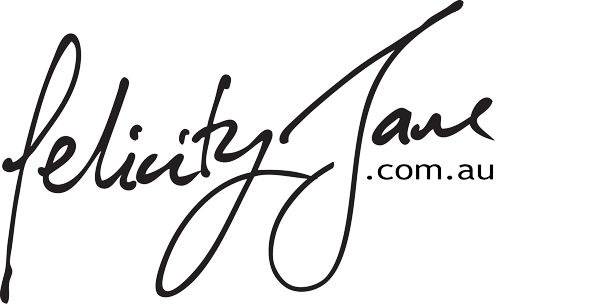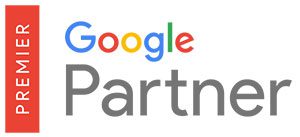What is Blockchain?
A blockchain is a digital ledger of all cryptocurrency transactions. It is a database that is spread across multiple locations or devices. This decentralized nature makes it resistant to tampering or single points of failure. Additionally, blockchain often uses cryptography to secure their data. It is constantly growing as “completed” blocks are added to it with a new set of recordings. Bitcoin nodes use the blockchain to differentiate legitimate Bitcoin transactions from attempts to re-spend coins that have already been spent elsewhere.
How is Blockchain Used?
Blockchain technology can be used to create a permanent, public, transparent ledger system for compiling data on sales, tracking digital use and payments, and more importantly, it can be used to facilitate the fair exchange of assets between parties.
When is Blockchain Used?
Blockchain is most commonly used in the context of cryptocurrency, such as Bitcoin. However, the potential applications of blockchain technology are nearly limitless. Some other potential use cases include:
– Tracking the provenance of food and other products
– Creating a decentralized land registry
– Automating the management of complex financial instruments
– Streamlining the process of voting and elections
– Enabling peer-to-peer energy trading
– Facilitating the management of supply chains.
Why Use Blockchain?
There are several reasons why one might want to use blockchain technology. First and foremost, it is a very secure way of storing data. Additionally, blockchain technology is transparent and immutable, meaning that once data has been entered into the blockchain, it cannot be altered. This could potentially revolutionize many industries by increasing trust and transparency. Finally, blockchain technology has the potential to streamline many processes and make them more efficient.
What Are the Benefits of Blockchain?
There are several benefits of blockchain. First, they offer increased security due to their decentralized nature. Second, they can help to reduce costs by eliminating the need for intermediaries. Third, blockchain are often transparent, meaning that all parties involved can view the data. This transparency can help to increase trust between parties.
What Are the Risks of Blockchain?
There are also some risks associated with blockchain. First, since they are decentralized, there is no single point of control. This can make it more difficult to manage a blockchain. Additionally, blockchain are often transparent, meaning that all parties involved can view the data. This could potentially lead to privacy concerns. Finally, blockchain are still in the early stages of development and there is a lack of standardization across different platforms. This could make it difficult for developers to create applications that are compatible with multiple platforms.
What is a blockchain platform?
A blockchain platform is a type of distributed ledger that allows developers to create decentralized applications (dApps). A dApp is an application that runs on a decentralized network, such as a blockchain. With a blockchain platform, anyone can create a dApp without the need for central server or hosting infrastructure. This makes dApps very resistant to censorship or third-party interference. Some popular blockchain platforms include Ethereum, EOS, and NEO.
What is a Smart Contract?
A smart contract is a type of computer protocol that can be used to facilitate, verify, or enforce the negotiation or performance of a contract. Smart contracts were first proposed by Nick Szabo in 1996. He defined a smart contract as “a set of promises, specified in digital form, including protocols within which the parties perform on these promises.”
How Do Smart Contracts Work?
Smart contracts are stored on a blockchain platform and are written in code. This code is used to automate the execution of certain actions when certain conditions are met. For example, a smart contract could be used to automatically release funds from escrow to a seller when a buyer receives goods. Once the smart contract is deployed on the blockchain, it cannot be changed. This ensures that all parties involved can trust that the terms of the contract will be executed as written.
What Are the Benefits of Smart Contracts?
Smart contracts offer a number of potential benefits. First, they can automate many processes and make them more efficient. Second, they can increase trust between parties by eliminating the need for a third party to mediate or act as a middleman. Finally, smart contracts can help to reduce transaction costs by eliminating the need for intermediaries.
What Are the Risks of Smart Contracts?
Although smart contracts offer many potential benefits, there are also some risks to be aware of. First and foremost, smart contracts are immutable, meaning that once they are deployed on the blockchain, they cannot be changed. This could potentially lead to problems if there is a mistake in the contract code. Additionally, smart contracts can only be executed when certain conditions are met. If these conditions are not met, the contract will not be executed. This could lead to delays or problems if the conditions are not met in a timely manner.
What Is a Decentralized Application?
A decentralized application (dApp) is an application that runs on a decentralized network, such as a blockchain. With a blockchain platform, anyone can create a dApp without the need for central server or hosting infrastructure. This makes dApps very resistant to censorship or third-party interference.
What Are the Benefits of Decentralized Applications?
There are several benefits of decentralized applications. First, they are very resistant to censorship or third-party interference. Second, they can be used to create applications that are not controlled by any single entity. This decentralized nature makes dApps very resilient and leads to increased trust between users. Finally, dApps can potentially help to reduce costs by eliminating the need for intermediaries.
What Are the Risks of Decentralized Applications?
There are also some risks associated with decentralized applications. First, since dApps are not controlled by any single entity, they can be more difficult to manage. Additionally, dApps are still in the early stages of development and there is a lack of standardization across different platforms. This can make it difficult for developers to create dApps that are compatible with multiple platforms. Finally, dApps can be subject to security risks, as they are often built on top of open-source code.
What Is a Distributed Ledger?
A distributed ledger is a type of database that is spread across multiple locations or devices. This decentralized nature makes it resistant to tampering or single points of failure. Additionally, distributed ledgers often use cryptography to secure their data.
What Are the Benefits of Distributed Ledgers?
There are several benefits of distributed ledgers. First, they offer increased security due to their decentralized nature. Second, they can help to reduce costs by eliminating the need for intermediaries. Third, distributed ledgers are often transparent, meaning that all parties involved can view the data. This transparency can help to increase trust between parties.
What Are the Risks of Distributed Ledgers?
There are also some risks associated with distributed ledgers. First, since they are decentralized, there is no single point of control. This can make it more difficult to manage a distributed ledger. Additionally, distributed ledgers are often transparent, meaning that all parties involved can view the data. This could potentially lead to privacy concerns. Finally, distributed ledgers are still in the early stages of development and there is a lack of standardization across different platforms. This could make it difficult for developers to create applications that are compatible with multiple platforms.
Blockchain technology is still in its relatively early stages, but it has the potential to revolutionize how we interact with the digital world. While there are some clear advantages to using blockchain technology, there are also a few disadvantages to consider before making a decision about whether or not to implement it. We hope this article has given you a better understanding of what blockchain is and how it can be used.







